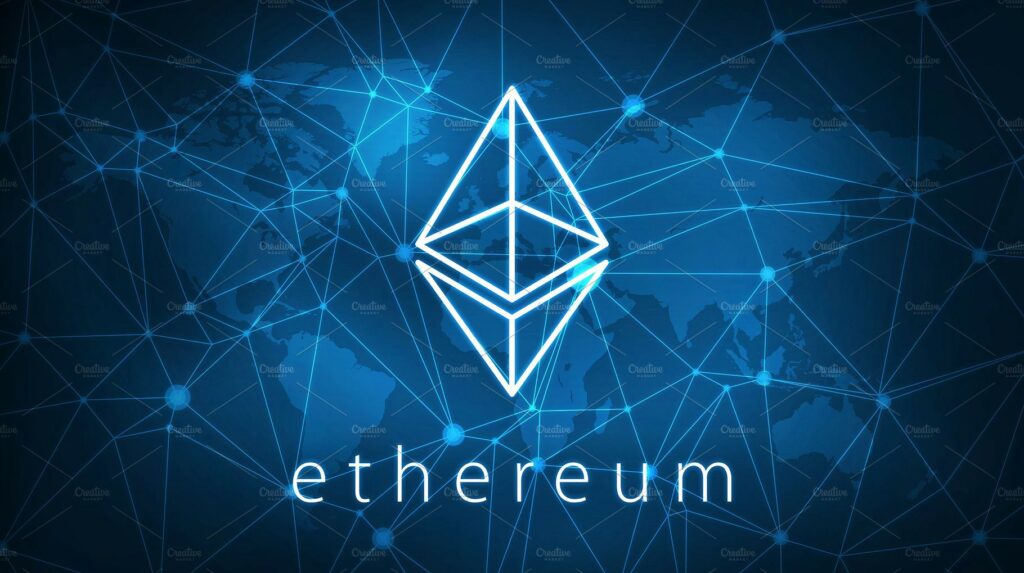With the growing popularity of the decentralized web (aka Web3), there’s also a fast growing interest in secure domains.
You may be asking yourself: “What the heck are those?”
I totally understand…and don’t worry, we’ll get into it! First thing’s first, though—why do you care? Well, along with the rest of the NFT space, Ethereum Name Server domains are becoming hot.
Brands are starting to pick up .eth domains while they still can. Budweiser bought beer.eth for $96,000. Plus, there are more uses for Web3 domains than DNS domains, which are pretty much only used as website addresses. Not to mention, there are some money-making opportunities with things like domain arbitrage and the recent ENS airdrop that gave out thousands of dollars worth of crypto to ENS users. Are you starting to feel the FOMO yet?
What are Web3 secure domains?
 Maybe you’ve never tried to set up your own website, so you don’t know how DNS domains currently work on Web2 (i.e. the internet that we mostly use today). You can thank your lucky stars if that’s the case and you’ve never had to mess with buying, registering, and linking a domain to your website. If you want to read more about Web3, the decentralized web, do that here.
Maybe you’ve never tried to set up your own website, so you don’t know how DNS domains currently work on Web2 (i.e. the internet that we mostly use today). You can thank your lucky stars if that’s the case and you’ve never had to mess with buying, registering, and linking a domain to your website. If you want to read more about Web3, the decentralized web, do that here.
Before we get started – and we don’t have to get too technical in this article – it’s helpful to note that:
- Just about any website you access on the internet today is hosted on a centralized server;
- Uses a DNS domain name that’s managed by a registry like GoDaddy or Namecheap; and
- That registry is accredited by a nonprofit called ICANN.
Decentralized, secure domains are a bit different.
What are decentralized domains used for?
Ethereum Name Server domains run, of course, on the Ethereum blockchain. They are minted as NFTs, which you can then essentially lease for an annual fee that varies depending on the length of the domain name. Once your ENS domain is on the blockchain, it cannot be blocked or censored, unlike a Web2 domain, which can be taken down by a registry if you do something they don’t like.
Sometimes entire domains are blocked to user access by governments like China or even a school or workplace—blockchain domains cannot be blocked.
There are also new ways that these decentralized, secure domains can be used. For example, the most common use case right now is linking them to a crypto wallet. Instead of copying and pasting a long string of letters and numbers (which you’re liable to enter incorrectly), you could send Bitcoin to Vitalik Buterin at vitalik.eth.
One of the hopes and goals of Web3 domains is that they will eventually be used for secure identity across the entire internet. Instead of logging into every centralized website or app with a separate username and password, you could just use your Web3 domain name. Because it’s both unique and verifiable, you wouldn’t need a username and password.
It is also possible to use ENS domains to point to your website. The infrastructure for Web3 is different from the current web and is still being built out. But using IFPS, a decentralized web hosting system, you can then point a secure domain to files that have been uploaded to it.
Currently, people accessing your website will either need to use a supported browser like Opera or Brave, a plug-in, or change some security settings in browsers like Chrome and Firefox. But these use cases are getting updated and easier to use every day. There are also more use cases that can be envisioned and created—it just takes a little imagination paired with some technical know-how.
Why you need a blockchain domain
Web3 decentralization is one of the most attractive reasons to grab a secure domain for most crypto enthusiasts. They’re censorship-resistant and will likely grow to become one of the main identification methods in the decentralized web.
Using an NFT for your online identity is also a good way to keep your information pseudonymous since most of the decentralized web is permissionless and no KYC is needed. Just like other kinds of NFTs, ownership can be tracked and verified without necessarily revealing a person’s identity.
Right now, because there still is not as much Web3 infrastructure as Web2, secure domain holders are very early adopters. There are more domain services besides Ethereum Name Service and some of them have a one-time purchase cost.
For example, you could get a .crypto domain for $40 and never have to pay any registration fees, unlike DNS domains which have annual fees you’re required to pay to maintain ownership of the domain. Even services like ENS, which have an annual fee, can be lower than some Web2 domain name renewals. Who knows what the secure domain landscape will look like in the future, but for now, they’re very affordable.
If you remember back in the dot-com boom of the 90s, everyone wanted a .com domain. Sure, you could have .net or .org but those were not as coveted. Many people remember the bubble that popped, causing Pets.com, Boo.com, and others to crumble. But there were, and still are, domain flippers who saw the future need for domain names and took advantage of an arbitrage opportunity by buying domains at a low price and selling them for much more.
It’s a little harder to flip domains these days, even with the expansion of more varied top-level domains (TLDs). There are simply fewer on the market that people are vying to get their hands on. We’re still early enough in the Web3 domain world to possibly grab some domains you think people will want in the future and have them in your back pocket.
There are also other kinds of rewards that you might stumble across for having a secure domain. When Ethereum Name Service announced that they were releasing a governance token for their new DAO, ENS domain holders found out they would be eligible for an airdrop, which is basically a token reward for participating in the platform.
There are other kinds of airdrops, which you can read about here, but the Ethereum Name Service airdrop was one of pretty significant value. Some people received thousands of dollars worth of crypto in the airdrop. And the DAO token went up in value in the days after it was released.
Even though the ENS airdrop has already happened, it’s not out of the question that one of the other Web3 domain services could give rewards in the future.
Where to get secure domains
Speaking of other secure domain services, Ethereum Name Service isn’t the only one. If you want a .eth domain, you’ll need to head to ENS. But here are some more options.
Handshake domains
While ENS runs on the Ethereum blockchain, Handshake Domains (HNS) operates on its own chain and mirrors content to the legacy internet. It doesn’t actually replace DNS but is a decentralized root zone file. They’re sold via auctions, there is no renewal fee, and 1.2 million domains have already been bought.
Unstoppable domains
If you’re in the market for a .crypto, .coin, .nft, among other TLDs, Unstoppable Domains (UD) is the place to get them. You can buy them directly from the website (if they’re still available) for varying prices, depending on the length. Once you own one, it’s yours forever—no renewal fees. There is an Ethereum gas fee that you have to pay to mint the domain which, these days, can be quite expensive. But in early Nov 2021, UD enabled minting on the layer-2 solution Polygon for free. And more features are on the way.
Solana domains
Ethereum Name Service and Unstoppable Domains both run on Ethereum. But you can also get a .sol domain from Solana Domains that runs on the Solana blockchain. Many people view Solana as an up-and-coming blockchain, especially in the NFT sector, because gas fees are much lower than on Ethereum. If you want to get your hands on a .sol domain, you’ll need to be the highest bidder in an auction and pay for it with USDC. The smallest required bid is $21 and, if no one outbids you, that’s your all-in price since there are no renewal fees.
The future of Web3
 The future of the decentralized web is on its way. Secure domains are likely going to be an integral part of that as more and more infrastructure is built. But it’s not only a future value that you’re banking on when you acquire an ENS or another Web3 domain name.
The future of the decentralized web is on its way. Secure domains are likely going to be an integral part of that as more and more infrastructure is built. But it’s not only a future value that you’re banking on when you acquire an ENS or another Web3 domain name.
You can start using it now by connecting it to your wallet and asking all your friends to send you money every time you see them. If you believe in the future of decentralization and you want to be part of helping Web3 overtake the legacy internet, secure domains are something you don’t want to miss out on. Do you have yours?
About the Author

Emily Weber
About Decentral Publishing
Decentral Publishing is dedicated to producing content through our blog, eBooks, and docu-series to help our readers deepen their knowledge of cryptocurrency and related topics. Do you have a fresh perspective or any other topics worth discussing? Keep the conversation going with us online at: Facebook, Twitter, Instagram, and LinkedIn.


